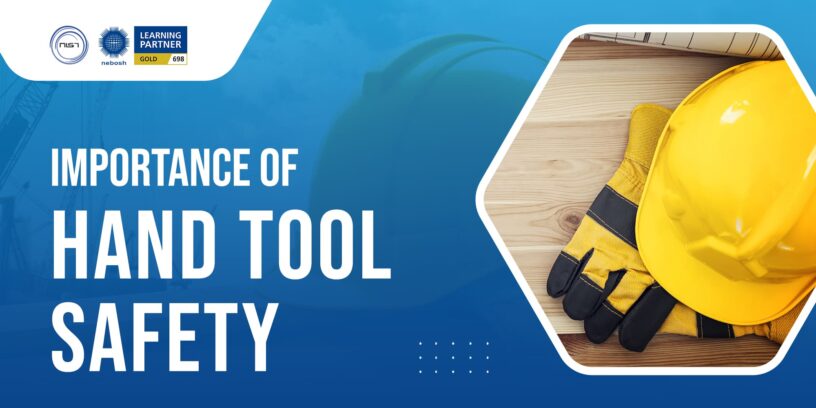Some of the hand tools that we use in our work on a daily basis can at times lead to accidents: hammers, axes, saws, drills, sanding and grinding tools, and pliers, among others. A number of studies have been done on tool accidents that have shown the prevalence of certain injuries related to these tools; for example, over two-thirds of all industrial injury claims were associated with hand-held power tools and hand-held/hand-arm power tools.
In addition, many accidents occur when workers don’t follow safety procedures such as proper handling and storage of these types of tools.
A surveillance study of work injuries caused by power and non-power hand tools was conducted to assess industry and occupational specific associations, the incidence of specific tools, and the kind of injuries. The Supplementary Data System of the Bureau of Labor Statistics indicated 129,399 workers’ compensation claims in 1983. Non-power hand tools caused 101,095 injuries, whereas power hand tools caused 28,304 injuries.
Improperly used tools:
Hand tools are usually designed for a specific task and should not be used for another purpose without modification, or at least a thorough understanding of how the tool works and what adjustments need to be made to make it safe to use in its intended capacity (Hendrix).
In addition to being familiar with the tool, one needs to know how to properly use the tool in order to avoid injury to oneself or others while working with it and to ensure the proper operation of the tool. Hand tool misuse occurs when an employee misplaces, loses, or mishandles a tool, or uses it for unintended purposes (elements of error).
An example is when employees mistakenly use a power saw to cut the wood rather than to perform another task (error). Hand tool misuse also includes inadequate training because employees lack the skills necessary to safely operate the tool (element of neglect). Injuries from hand tools occur most often through misuse of the tools rather than during their proper use, but all types of hand tools have some risk of causing injury.
The objective of hand tools Safety Training:
The objective of this hand tool safety course is to ensure that learners acquire skills in safe use of hand tools by making them:
- Understand the risks that can be associated with the use of hand tools
- Learn how to identify, prevent, correct, and control those risks
- Learn how to evaluate these risks and how to eliminate them without danger
- Determine where, by whom, and under what conditions hand tools may be used
- Understand which hand tools may not be used safely, which conditions must be met in order to be used safely, and how to use safety devices
- Identify which hand tools are used in apprenticeship training
- Learn the basic principles of PPE selection used while working on any jobsite with tools that can cause harm if not used properly or with worn out equipment, which includes Hand Tools, Electricity Gasoline Power tools, Breathing Protection Devices, Eye Protection, Safety Shoes/Goggles, Hard Hats, Gloves, Work Clothing, Protective Work Clothes, Personal First Aid Kit, etc.
Why industries need Hand-tool safety training:
- This will assist you in ensuring that your employees’ hands are protected when using sharp tools
- It is your duty to set the safety standards in your company to ensure that your staff can work safely.
- It is also a requirement that you be registered for safety and health training and be assessed regularly to ensure that your standards are maintained.
- It reduces financial loss due to any accident incurred by the unsafe use of hand tools.
Topics discussed:
Learners would gain knowledge and skills related to the following aspects of hand tool safety as an outcome of this training and put them into practice:
- How to prevent injuries
- The recognition of potential hazards
- What to do if an injury happens
- Ways of reporting incidents and accidents
- Identifying which hand tools are used in apprenticeship training
- Recognizing when a new tool should be used
- How to check for tool damage
- The basic principles of PPE selection
- The correct procedure for using hand tools safely
- Knowing how to use safety devices
- When to wear eye protection
- Proper techniques when using power equipment
- Recognizing emergency situations, taking appropriate action, and reporting incidents/accidents
- The correct methods for using hand tools safely include how to handle tools with different degrees of danger (e g, chainsaw) and how to correctly use each tool (e g, drill)
Who needs Hand-tool safety training?
- Employees who work using hand tools
- Supervisors
- Workers
- Safety Professionals
Why NIST:
Training is an important part of any organisation’s growth process, to ensure it runs smoothly and productively with maximum effectiveness of resources and time. We provide a quality learning experience that is customized to each individual’s needs and requirements. NIST course on hand-tool safety helps to ensure a good hand-tool safety training for employees who use sharp tools and increases your organisational profit, by helping you keep your staff safe, productive, happy and profitable.
For further details, contact our client servicing team @ +91 9384663536 or mail us at corporate.sales@nistinstitute.com
Reference: https://www.cdc.gov/niosh/nioshtic-2/00184707.html














Leave a Reply